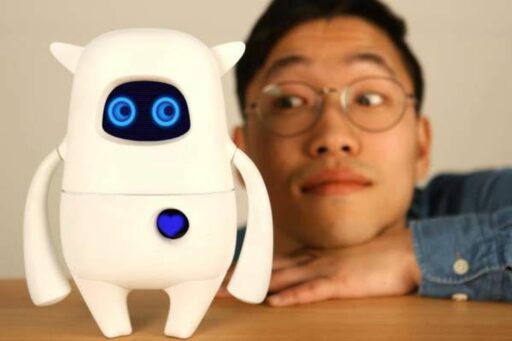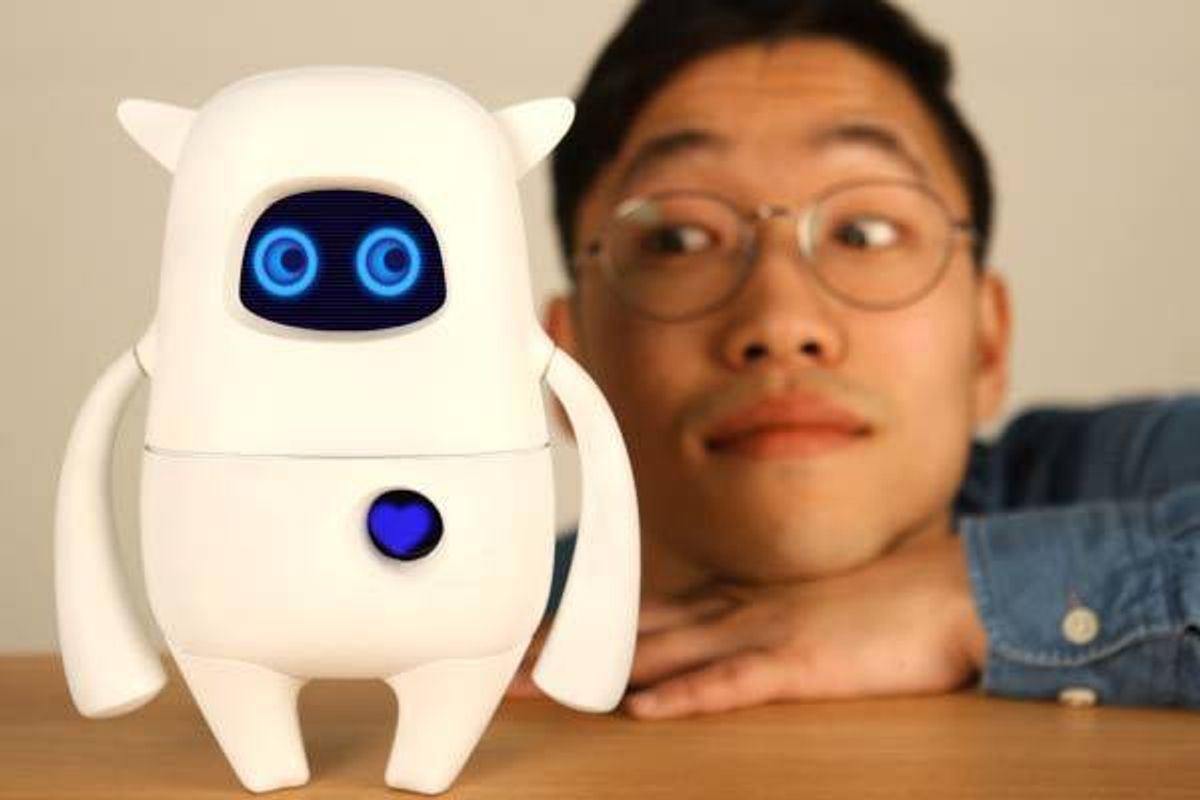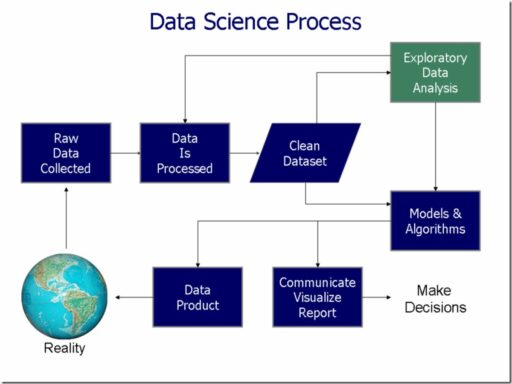Table of Contents
The convergence of data science and robotics represents a significant milestone in technological advancement, promising transformative solutions across industries. Data science, with its ability to extract insights and patterns from vast datasets, is revolutionizing the field of robotics by enhancing perception, decision-making, and autonomy. In this article, we delve into the burgeoning synergy between data science and robotics, exploring its implications, applications, and the future of intelligent automation.
Key Takeaways
- The integration of data science and robotics is creating intelligent, adaptive, and collaborative systems capable of sophisticated interactions with their environment and stakeholders.
- Data-driven models and natural interaction techniques such as NLP are enhancing the way robots understand and respond to human commands, emotions, and preferences.
- Advanced AI integration in robotics, through machine learning and neural networks, is enabling autonomous decision-making and the development of robots with cognitive abilities.
- Robotics Automation Software is transforming industries by automating complex processes, boosting productivity, and offering high precision in tasks such as manufacturing and healthcare.
- Ethical considerations, workforce evolution, and public perception are crucial societal implications of data robots that need to be addressed as the technology progresses.
The Convergence of Data Science and Robotics

Enhancing Perception and Decision-Making
In the realm of intelligent automation, data robots are transforming the way decisions are made. By integrating advanced computer vision technologies, these robots can interpret and understand visual data, leading to more informed and precise decision-making processes. This capability is particularly crucial in environments where rapid and accurate interpretation of visual information is essential.
Data-driven perception and adaptive learning are at the core of modern robotics, enabling machines to not only execute tasks with speed and precision but also to adapt and learn from their interactions with the world.
The process of decision-making in robotics is multifaceted, involving the analysis of data collected through enhanced perception. Robots utilize sophisticated algorithms and artificial intelligence to weigh options and devise strategic plans of action. This level of autonomy is a significant step towards more adaptive and responsive robotic systems.
Here’s how AI algorithms enhance decision-making:
- AI algorithms analyze data from multiple sources, such as customer behavior and market trends, to generate actionable insights.
- By automating decision-making, AI reduces human bias and enables rapid response to dynamic business conditions.
Adaptive Learning through Machine Learning Algorithms
The integration of machine learning (ML) into robotics has ushered in a new era of adaptive learning and decision-making. Robots are now capable of learning from experience, reducing the need for extensive programming. For instance, deep learning, a subset of ML, enables robots to mimic the human brain’s adaptability to new inputs, enhancing their flexibility in various tasks.
Machine learning algorithms, such as reinforcement learning and supervised learning, empower robots to analyze data, recognize patterns, and refine their actions over time. This continuous improvement is pivotal for robots to make informed decisions and dynamically adjust to feedback. The adaptability provided by ML is crucial for robots operating in unpredictable environments.
Hyperautomation, which incorporates ML algorithms, exemplifies the transformative impact of adaptive learning. These algorithms allow automation systems to evolve by identifying patterns and optimizing processes, leading to perpetual innovation and efficiency.
The synergy between AI and robotics, fueled by ML, enables intelligent machines to simulate human-like behaviors. By learning and adapting autonomously, robots can undertake complex tasks and problem-solving, significantly enhancing productivity.
The Future of Collaborative Robotic Systems
The landscape of collaborative robotics is rapidly transforming as cobots become increasingly capable of working safely and efficiently alongside humans. This evolution is eliminating the need for traditional safety barriers, fostering a new era of human-robot collaboration that promises to revolutionize industrial and manufacturing workflows.
Machine learning is at the forefront of this transformation, endowing cobots with the ability to learn from their environment and improve over time. This integration of AI and robotics is not only enhancing the capabilities of cobots but also redefining their role in the workplace.
The synergy between human expertise and robotic precision is creating a paradigm shift in how tasks are approached and completed, with cobots now taking on roles that were once thought to be exclusively human.
As we look to the future, the integration of AI models and collaborative robotics suggests a trajectory where the lines between human and machine capabilities become increasingly blurred. The promise of advanced AI integration and improved human-robot interaction heralds a new chapter in automation solutions.
The Evolution of Intelligent Automation

From Rule-Based to Adaptive Systems
The shift from rule-based systems to adaptive automation marks a significant milestone in the evolution of intelligent automation. Adaptive learning and decision-making are at the heart of this transformation, enabling machines to not just follow predefined rules but to also anticipate outcomes and dynamically adjust their actions. This adaptability is crucial for robots operating in unpredictable environments, such as autonomous vehicles and collaborative robots (cobots) working alongside humans.
The integration of AI, machine learning (ML), and natural language processing (NLP) technologies is driving this shift towards hyperautomation. By leveraging these technologies, organizations can implement adaptive decision-making processes that respond swiftly to changing business needs and market dynamics. The table below illustrates the contrast between rule-based and adaptive systems:
| Feature | Rule-Based Systems | Adaptive Systems |
|---|---|---|
| Decision Making | Predefined rules | Dynamic adjustment based on feedback |
| Learning Capability | None | Continuous learning from experience |
| Responsiveness to Change | Static | Highly responsive to environmental changes |
| Collaboration | Limited interaction with humans | High-level collaboration with humans |
The next phase of RPA’s evolution may well be characterized by intelligent automation, where bots not only automate repetitive tasks but also exhibit the ability to learn, adapt, and make decisions autonomously. This is not just an incremental improvement; it’s a paradigm shift that redefines the capabilities of data robots.
The Role of Predictive Analytics in Robotics
Predictive analytics is a transformative force in robotics, endowing machines with the foresight to anticipate and navigate the complexities of dynamic environments. By analyzing patterns in data, robots can preemptively address potential issues and optimize their performance, ensuring reliability and efficiency in their operations.
- Predictive maintenance capabilities are enhanced through the analysis of sensor data and historical records, allowing for early detection of equipment anomalies.
- Machine learning algorithms empower robots to learn from experience, adjusting their actions to improve over time.
- The integration of predictive analytics with robotics is leading to the development of intelligent, adaptive systems capable of sophisticated interactions.
Predictive analytics in robotics is not just about preventing downtime; it’s about creating a foundation for continuous improvement and innovation in automated systems.
Redefining Human-Robot Interaction
The landscape of human-robot interaction is undergoing a transformative shift, with data science playing a pivotal role in creating more intuitive and collaborative experiences. Natural language processing (NLP), sentiment analysis, and gesture recognition are not just buzzwords; they are the technologies enabling robots to understand and respond to human nuances. This evolution is not limited to understanding alone; robots are now being designed to adapt their behavior to align with user preferences and cultural contexts, which is crucial for their acceptance in sensitive domains like healthcare and education.
The synergy between humans and robots is becoming more nuanced, with data-driven models at the forefront of this change. As robots become more integrated into our daily lives, the importance of seamless interaction grows.
Collaborative robots, or ‘cobots’, exemplify this new era of cooperation. These machines are built to work safely alongside humans, eliminating the barriers that once kept them separate. The implications for industries are profound, with cobots enabling a reimagined workflow that combines human ingenuity with robotic precision and endurance.
- Understanding and responding to human commands and emotions
- Adapting to user preferences and cultural norms
- Enhancing user experience and fostering trust
- Reshaping traditional manufacturing and industrial practices
Revolutionizing Industries with Robotics Automation Software

Streamlining Operations in Manufacturing and Logistics
The integration of robotics into manufacturing and logistics has been a game-changer for the industry. Robotic systems have significantly increased production rates by enhancing speed and precision, which are crucial in these sectors. In logistics, for instance, automated solutions have transformed warehouse operations, leading to a more efficient organization of inventory and optimized order fulfillment processes.
Automation processes are streamlined through the collaboration of interconnected elements, allowing robots to adapt to changing environments and optimize their performance.
The impact of intelligent automation in these fields is not just about efficiency; it also translates into tangible business outcomes. Companies have reported higher satisfaction scores and reduced response times, which contribute to overall cost savings and a competitive edge in the market. The table below illustrates some of the key benefits observed:
| Benefit | Description |
|---|---|
| Efficiency Gains | Enhanced speed and precision in production and logistics. |
| Cost Savings | Reduction in errors and optimized supply chain management. |
| Customer Satisfaction | Improved response times leading to higher satisfaction scores. |
Enhancing Precision in Healthcare and Agriculture
In the realms of healthcare and agriculture, intelligent automation has become a pivotal force in enhancing precision and efficiency. Robotic systems are now capable of executing tasks with remarkable accuracy, reducing human error and elevating productivity to new heights. These advancements are particularly evident in precision agriculture, where real-time information is leveraged to optimize resource use and improve farming methods.
The integration of AI and machine learning algorithms into robotic systems allows for the continuous improvement of these tasks. For example, in healthcare, automation of administrative tasks such as appointment scheduling and patient data entry not only reduces the burden on professionals but also increases the accuracy of these processes.
The potential impact of intelligent automation on industry practices is profound, driving operational efficiency and enhancing competitiveness.
Here are some key benefits of data-driven robotics in these sectors:
- Enhanced Accuracy and Precision: Ensuring high-quality data for AI algorithms leads to more accurate predictions and outcomes.
- Mitigating Bias: High data quality is crucial for reducing bias in AI-driven systems, which is especially important in sensitive areas like healthcare.
- Adaptive Efficiency: Robotic systems can make necessary adjustments to optimize efficiency and accuracy, tailoring their operations to specific applications.
The Impact of RPA on Service and Retail Sectors
Robotic Process Automation (RPA) is transforming the service and retail sectors by automating routine tasks, leading to enhanced efficiency and customer satisfaction. Businesses are leveraging RPA to redefine the customer experience, offering faster and more accurate services.
- RPA streamlines customer support by automating responses to common queries and routing tickets efficiently.
- In retail, RPA facilitates inventory management, ensuring stock levels are maintained accurately, and orders are processed swiftly.
- The technology assists in managing loyalty programs, updating customer profiles, and personalizing marketing efforts.
The integration of RPA in service and retail sectors signifies a shift towards more strategic and customer-centric business models. By handling repetitive tasks, RPA frees employees to focus on value-added activities, such as customer engagement and service innovation.
The table below illustrates the benefits of RPA in the retail sector:
| Benefit | Description |
|---|---|
| Efficiency | Accelerates transaction processing and reduces wait times. |
| Accuracy | Minimizes errors in order processing and customer data handling. |
| Cost Savings | Lowers operational costs by reducing manual labor. |
| Scalability | Easily adapts to varying demand without additional staffing. |
| Customer Experience | Enhances service quality and personalization. |
AI Integration in Robotic Process Automation

Learning from Data: The Power of Neural Networks
The integration of neural networks in robotic systems has marked a significant milestone in the field of intelligent automation. Neural networks, inspired by the human brain’s architecture, enable robots to recognize complex patterns and learn from data without explicit programming. This capability is particularly beneficial in environments where robots must adapt to new and unforeseen situations.
Robots, now more than ever, are capable of making autonomous decisions based on the insights gleaned from vast datasets. The use of Convolutional Neural Networks (CNN) in conjunction with Robotic Process Automation (RPA) technologies, for instance, has led to the optimization of robot control systems, allowing for more sophisticated and nuanced behaviors.
The adaptability of robots through machine learning algorithms is essential for tasks that require precision and the ability to anticipate outcomes. By continuously learning from data, robots can dynamically adjust their actions, leading to improved efficiency and effectiveness in their operations.
The following points highlight the transformative impact of neural networks in robotics:
- Enhanced perception and interpretation of environmental data
- Improved decision-making through pattern recognition
- Dynamic adaptation to new tasks and challenges
- Reduction in programming requirements due to autonomous learning
Autonomous Decision-Making in Complex Environments
In the realm of intelligent automation, autonomous decision-making represents a pinnacle of achievement. Robots equipped with advanced sensors and AI algorithms can interpret complex scenarios and execute tasks with a level of autonomy that closely mirrors human judgement. This capability is particularly crucial in environments that are dynamic and unpredictable, where pre-programmed responses are insufficient.
- Adaptive learning and decision-making allow robots to modify strategies on the fly, enhancing their effectiveness.
- Swarm robotics utilize collective intelligence for coordinated decision-making, enabling multiple agents to tackle intricate challenges.
The sophistication of autonomous systems is not just about the technology; it’s about the seamless integration of data-driven insights with real-time responsiveness.
The application of autonomous agents to tasks such as search and rescue, environmental inspection, and mapping in complex environments is a testament to the progress in this field. As these systems evolve, they will continue to redefine the boundaries of what is possible with intelligent automation.
The Rise of Cognitive Robotics
The advent of cognitive robotics marks a significant milestone in the field of intelligent automation. Robots are no longer mere tools; they are evolving into autonomous entities capable of understanding and interacting with their environment in sophisticated ways. This transformation is fueled by the integration of advanced AI, particularly neural networks, which empower robots with the ability to learn from data and make autonomous decisions.
Cognitive RPA, as highlighted by DesignRush, can be used to monitor application health through various software robots during the development phase. These robots are adept at observing different data patterns, which is crucial for preemptive maintenance and quality assurance.
The synergy between data science and robotics is not just a technological leap but a redefinition of what automation can achieve. It heralds a future where robots are partners in problem-solving, capable of adapting and evolving alongside human counterparts.
The table below outlines the core aspects of cognitive robotics:
| Aspect | Description |
|---|---|
| Learning from Data | Utilizing machine learning algorithms and neural networks for continuous improvement. |
| Autonomous Decision-Making | Making informed choices without human intervention in complex scenarios. |
| Adaptive Interaction | Engaging with humans and other robots in a collaborative ecosystem. |
The Societal Implications of Data Robots

Ethical Considerations in Intelligent Automation
The integration of AI in automation heralds a new era of efficiency and innovation. However, it brings forth significant ethical challenges that must be addressed. Ensuring the responsible use of AI and machine learning is not just a technical necessity but a moral imperative. Ethical frameworks are essential in guiding organizations to address issues such as fairness, transparency, and data privacy.
Human workers play a critical role in embedding ethical considerations into automated systems. They are instrumental in identifying potential biases and ensuring that decision-making processes remain responsible and just. This human oversight is vital in maintaining an ethical balance in the face of rapid technological advancement.
Automation and AI offer numerous benefits, but their implementation also raises concerns about job displacement and the broader ethical landscape. It is crucial to navigate these concerns thoughtfully to achieve a balance between technological progress and social responsibility.
Privacy and security are additional ethical concerns that come with AI-driven automation. The protection of data is paramount, as AI systems require access to large volumes of information. Safeguarding this data against unauthorized use is a cornerstone of ethical AI practices.
The Workforce of the Future: Humans and Robots in Synergy
The advent of intelligent automation heralds a new era in the workforce, where humans and robots collaborate to achieve unprecedented levels of productivity and innovation. In shared workspaces, robots equipped with advanced sensors and technology ensure seamless interaction, contributing to increased safety and efficiency.
The true potential of this synergy lies not just in technological integration, but in the interdisciplinary teamwork and knowledge sharing that it fosters. It’s about leveraging the unique strengths of both humans and machines to create a more dynamic and capable workforce.
As industries evolve with AI-driven automation, the role of human workers shifts towards providing essential expertise and oversight. This transformation necessitates a focus on reskilling and upskilling, ensuring that the human workforce remains an integral and evolving part of the automation equation.
The burgeoning synergy between data science and robotics is not only reshaping our current industries but also paving the way for future advancements in intelligent automation.
Public Perception and Acceptance of Data-Driven Robotics
The public’s acceptance of data-driven robotics is pivotal for the widespread adoption of these technologies. Public opinion shapes the regulatory landscape and influences the pace of innovation. As intelligent automation becomes more prevalent, understanding and addressing societal concerns is crucial.
- Trust in the technology and its developers
- Concerns about privacy and data security
- The potential for job displacement and the need for workforce reskilling
- The reliability and safety of autonomous systems
The integration of intelligent automation into daily life represents a significant cultural shift. It is essential to foster a dialogue that includes all stakeholders to ensure that the benefits of data-driven robotics are equitably distributed and that ethical considerations are at the forefront.
As we move forward, it is important to monitor the evolving public sentiment towards robotics. Surveys and studies can provide valuable insights into the acceptance levels across different demographics and regions. These findings can guide policymakers, developers, and businesses in their efforts to integrate robotics in a socially responsible manner.
Conclusion
The integration of data science and robotics heralds a new era of intelligent automation, where the fusion of these disciplines is not just reshaping industries but redefining the boundaries of what machines can achieve. As we have explored, this synergy enables robots to perceive, learn, adapt, and interact with unprecedented sophistication. The advancements in natural language processing, machine learning, and AI-driven decision-making empower robots to perform complex tasks autonomously, collaborate with humans intuitively, and contribute to operational efficiency and innovation. The future of intelligent automation is bright, with the potential to transform every sector of society by enhancing capabilities, streamlining processes, and opening up new possibilities for human-robot collaboration. As technology continues to advance, the role of data robots will become increasingly central, driving progress and prosperity in the digital age.
Frequently Asked Questions
How is data science enhancing the capabilities of robotics?
Data science is enhancing robotics by providing the ability to extract insights and patterns from vast datasets, which improves robots’ perception, decision-making, and autonomy. Machine learning algorithms enable robots to learn, adapt, and optimize their behavior over time, leading to more intelligent and autonomous robotic systems.
What role does AI play in robotic process automation (RPA)?
AI plays a crucial role in RPA by introducing advanced cognitive abilities to robots. Through machine learning algorithms, neural networks, and predictive analytics, robots can learn from data, make autonomous decisions, and adapt to complex environments, thus enhancing the efficiency and accuracy of automated processes.
How are industries benefiting from robotics automation software?
Industries benefit from robotics automation software by streamlining operations, increasing productivity, and reducing costs. The integration of AI capabilities allows robots to adapt to dynamic environments, learn from data, and make autonomous decisions, which optimizes workflows and improves accuracy, giving businesses a competitive edge.
What are the societal implications of intelligent automation and data robots?
The societal implications of intelligent automation and data robots include ethical considerations, such as privacy and employment impacts, and the need for synergy between humans and robots. As robots become more integrated into society, public perception and acceptance will be critical for the successful adoption of these technologies.
How does intelligent automation impact human-robot interaction?
Intelligent automation impacts human-robot interaction by fostering intuitive interfaces and natural communication channels. Technologies like NLP and sentiment analysis enable robots to understand and respond to human commands and emotions effectively, adapting their behavior to user preferences and contextual cues.
What is the future of collaborative robotic systems?
The future of collaborative robotic systems lies in the continued integration of data science and AI, leading to robots that can work alongside humans seamlessly. These systems will feature enhanced perception, adaptive learning, and decision-making capabilities, enabling them to perform tasks with higher precision and intelligence.





